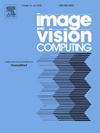EHGFormer: An efficient hypergraph-injected transformer for 3D human pose estimation
IF 4.2
3区 计算机科学
Q2 COMPUTER SCIENCE, ARTIFICIAL INTELLIGENCE
引用次数: 0
Abstract
Recently, Transformer-based approaches have demonstrated remarkable success in 3D human pose estimation. However, these methods usually overlook crucial structural information inherent in human skeletal connections. In this paper, we propose a novel hypergraph-injected Transformer-based architecture(EHGFormer). The spatial feature extractor in our model decomposes joint relationships into first-order (joint-to-joint) and potential higher-order (joint-to-hyperedge) connections, and the attention mechanism of the spatial Transformer block, which integrates these relationships, forms the hypergraph-injected spatial attention. In addition, to address the trade-off between inference efficiency and estimation accuracy introduced by the hypergraph-injected spatial attention module, we design a multi-start grouped downsampling and restoration strategy. With this strategy, consistency in the sequence’s input and output order is maintained, while the temporal receptive field is expanded without requiring additional parameters. Furthermore, we propose a hierarchical feature distillation scheme, which applies different distillation strategies for tokens from various positions of the teacher network. This allows the narrower student network to selectively learn from the teacher network, yet improving its accuracy compared to existing feature distillation methods. Extensive experiments show that the proposed method achieves state-of-the-art performance on two benchmark datasets: Human3.6M and MPI-INF-3DHP. Code and models will be available at: https://github.com/Brian417-cup/EHGFormer.
求助全文
约1分钟内获得全文
求助全文
来源期刊

Image and Vision Computing
工程技术-工程:电子与电气
CiteScore
8.50
自引率
8.50%
发文量
143
审稿时长
7.8 months
期刊介绍:
Image and Vision Computing has as a primary aim the provision of an effective medium of interchange for the results of high quality theoretical and applied research fundamental to all aspects of image interpretation and computer vision. The journal publishes work that proposes new image interpretation and computer vision methodology or addresses the application of such methods to real world scenes. It seeks to strengthen a deeper understanding in the discipline by encouraging the quantitative comparison and performance evaluation of the proposed methodology. The coverage includes: image interpretation, scene modelling, object recognition and tracking, shape analysis, monitoring and surveillance, active vision and robotic systems, SLAM, biologically-inspired computer vision, motion analysis, stereo vision, document image understanding, character and handwritten text recognition, face and gesture recognition, biometrics, vision-based human-computer interaction, human activity and behavior understanding, data fusion from multiple sensor inputs, image databases.
 求助内容:
求助内容: 应助结果提醒方式:
应助结果提醒方式:


